Key sports law cases and developments to watch in 2017 - USA
Wednesday, 11 January 2017As 2017 begins, we wanted to take a look at the coming year and provide insight into which sports law cases you may wish to follow in 2017.
In this feature, some of the leading sports lawyers in the USA share their views on what they think are the key sports law issues and developments to follow in 2017.
We would like to thank all of the contributors to this article for taking the time out of their busy schedules to share their views with us.
Featured experts:
- Glenn M. Wong, Professor Emeritus and Attorney, Mark H. McCormack Sport Management Department, Isenberg School of Management, University of Massachusetts & Executive Director, Sports Law & Business Program, Distinguished Professor of Practice - Sports Law, Arizona State University
Assisted by Cameron Miller, Master of Sports Law & Business program, ASU. - Maureen Weston, Professor of Law, Pepperdine University
- Darren Heitner, Founder, HEITNER LEGAL
- Ellen M. Zavian, Esq., Founder of EZ Negotiation Institute and Professor of Sports Law at George Washington University, DC.
- Daniel Wallach, Shareholder, Becker & Poliakoff, Fort Lauderdale, Florida
- Ron Katz, Of Counsel, GCA Law Partners LLP
- Alan C. Milstein, Shareholder & Chairman Litigation at Sherman Silverstein Kohl Rose & Podolsky
- Len Glickman, Head of the Entertainment and Sports Law Practice at Cassels Brock & Blackwell LLP.
Assisted by Michael Weizel, Articling student, Cassels Brock & Blackwell LLP - John T. Wolohan, Professor, David B. Falk College of Sport and Human Dynamics at Syracuse University
- Paul Greene, Attorney/Founder at Global Sports Advocates, LLC
- Joseph Hanna, Partner, Goldberg Segalla
- Daniel Werly, Managing Editor, TheWhiteBronco.com
- Ryan Rodenberg, Associate professor of forensic sports law analytics, Florida State University, Tallahassee, Florida, US.
- Brian R. Socolow, Chair, Sports Practice Group at Loeb & Loeb LLP and Office Administrative Partner, New York Office
- Ryan Hilbert, Attorney at Holley & Menker, P.A.
- Kate Porter, International Arbitration and Sports Law Associate at Skadden, Arps, Slate, Meagher & Flom LLP
- Matt Mitten, Professor of Law, Executive Director, National Sports Law Institute and LL.M. in Sports Law Program for Foreign Lawyers, Marquette University Law School
- Richard Brand, Chair of the Sports group at Arent Fox
- Christina Campbell, Associate at Arent Fox
We hope you enjoy the article. If you think there’s anything you would have liked to have seen be mentioned please feel free to tweet us @LawInSport or email us with your suggestions at
JOSEPH M. HANNA
Partner, Goldberg Segalla
 These are a few of the precedential cases I will be watching in 2017:
These are a few of the precedential cases I will be watching in 2017:
Washington Redskins
In a case that parallels the high-profile Washington Redskins trademark battle that currently awaits appeal in the Fourth Circuit, the US Supreme Court agreed to tackle whether the federal government’s ban on offensive trademarks violates the First Amendment. This will likely establish the framework to determine whether arguably disparaging marks will be able to obtain federal registrations. The Court’s decision will significantly impact the Washington Redskins’ case: if it finds this ban unconstitutional, the Fourth Circuit may find in favor of Washington. However, if the Court upholds the ban’s constitutionality, Washington’s remaining options are limited.
FanDuel/DraftKings Merger
It will be interesting to see whether the planned merger between daily fantasy sports moguls FanDuel and DraftKings is permitted under antitrust regulations. Regulators may prohibit this merger, preventing the two largest daily fantasy sports providers from controlling over 80% of the market. If this merger survives the high level of scrutiny it is bound to receive and is approved, it likely will not be until the latter half of 2017.
Minor League Baseball Players’ FLSA Suit
After being decertified by U.S. District Judge Joseph Spero because players’ individual experiences vary too much and an employment survey used as evidence was flawed, Minor Leaguers attempted to recertify as a class back in September. In their new motion to certify, the players no longer listed offseason work as an issue and limited the scope of players to those participating in California League games and/or spring training or instructional league games in Arizona and Florida. It remains to be seen whether Judge Spero will accept this new motion to certify, but if he does not, it may deal a significant blow to players who arguably cannot receive compensation that would amount to minimum wage or overtime.
NCAA Grant-in-Aid Antitrust Litigation
The ongoing Grant-In-Aid Litigation, which would allow student-athletes to be paid beyond the full cost of school attendance, could have a significant impact on college athletics, as schools with deeper pockets could potentially control the market and continue to compete, forcing out smaller schools. Ideally, a less extreme solution will be reached, such as allowing student-athletes to participate in activities currently prohibited by the schools and NCAA.
NFL Players’ Concussion Injury Litigation
While the NFL has already agreed to a settlement to compensate a class of more than 22,000 former NFL players due to traumatic brain injuries, the struggle for some former players continues. Most recently, former players who support the uncapped settlement fought against briefs filed by challengers of the settlement, arguing that the challengers mischaracterized the ailments of one of the lead plaintiffs. In an effort to not jeopardize the settlement for the majority of class members who signed on to the agreement, the US Supreme Court may simply affirm that adequate protections are in place for future claimants.
DARREN HEITNER
Founder, HEITNER LEGAL
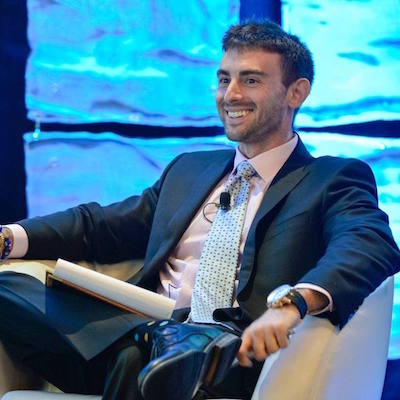 One issue that should certainly be a key sports topic in 2017 deals with the landscape of legalized sports betting in the United States. For over twenty years, the Professional and Amateur Sports Protection Act (PASPA) has prohibited states from permitting sports gambling within their borders. Four states had previous sports betting schemes grandfathered and thus protected, with the State of Nevada being the only that has been able to offer full-fledged sports betting to its residents and visitors.
One issue that should certainly be a key sports topic in 2017 deals with the landscape of legalized sports betting in the United States. For over twenty years, the Professional and Amateur Sports Protection Act (PASPA) has prohibited states from permitting sports gambling within their borders. Four states had previous sports betting schemes grandfathered and thus protected, with the State of Nevada being the only that has been able to offer full-fledged sports betting to its residents and visitors.
Challenges to PASPA have thus far yielded no fruits by those states bold enough to take action, the most recent of which has been the State of New Jersey. 2017 could see other states join New Jersey in an effort to overturn PASPA and we may see new legal challenges of the law through the judiciary.
DANIEL WALLACH
Shareholder, Becker & Poliakoff, Fort Lauderdale, Florida
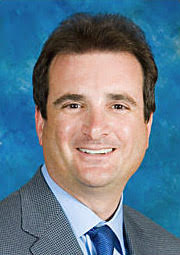 While 2016 may ultimately be remembered as the “Year of Deflategate,” 2017 promises to be a fascinating year for U.S. sports law. These are some of the key issues and cases that bear watching in the New Year:
While 2016 may ultimately be remembered as the “Year of Deflategate,” 2017 promises to be a fascinating year for U.S. sports law. These are some of the key issues and cases that bear watching in the New Year:
Sports Betting Litigation
In mid-January, the United States Supreme Court will announce whether it will weigh in on the New Jersey sports betting controversy. In August, a federal appeals court rejected New Jersey’s plan to legalize sports betting through a “partial repeal” law that would have decriminalized sports betting at the state’s casinos and racetracks. New Jersey has asked the Supreme Court to review that decision. If the Supreme Court agrees to hear the case—a long-shot at best (fewer than 2% of petitions are granted)—oral arguments will be held in the Spring and a decision could be rendered before the end of June. But even if the Supreme Court declines review, other states—such as New York and Mississippi—could mount separate legal challenges to the federal ban on state-sanctioned sports betting in 2017. The future of sports betting in the U.S. could depend on the outcome of these cases.
Fantasy Sports Litigation
A key case to watch in the fantasy sports arena is the lawsuit challenging the validity of New York’s recently-enacted daily fantasy sports (“DFS”) law. A group of New York citizens—backed by an anti-gambling group—has argued that the New York DFS law violates the state’s constitution because it was enacted without a voter referendum. This case will likely be decided in 2017. If the plaintiffs prevail, daily fantasy sports in New York could come to a complete standstill, which would be a major setback for the industry. There are several other lawsuits that could impact the fantasy sports industry as well. DraftKings, one of the two largest daily fantasy sports operators in the U.S., is engaged in litigation with the Attorney Generals of Illinois and Texas over whether daily fantasy sports is legal in each of those states. Both attorney generals had issued advisory opinions in 2016 concluding that DFS was illegal. DraftKings is challenging those determinations, and a decision in each case is expected in 2017. Finally, the proposed merger between DraftKings and FanDuel could end up in litigation in 2017 if federal regulators reject the deal on antitrust grounds. This could end up being the most important fantasy sports case of 2017, since a merger between the two largest companies is seen as essential for their survival. A decision by federal regulators is expected in 2017.
Concussion Litigation
With the settlement of the NFL concussion litigation having finally been approved by an appellate court, the focus will now turn to the approximately 70 lawsuits brought by retired players who “opted out” of the settlement. These cases—unless they are settled—will determine whether the NFL concealed the risks of playing football from its former players. A number of similar lawsuits have been brought against the National Hockey League, the National Collegiate Athletic Association, and several of its member conferences and schools. These cases will likely garner significant attention throughout 2017.
The Death of Amateurism?
The NCAA’s notion of “amateurism” will be put to the test on 2017. Two lawsuits—both pending in the Northern District of California—will determine whether college athletes can receive compensation beyond the value of a scholarship. In Dawson v. NCAA, the issue is whether scholarship athletes in revenue-producing sports (such as football and basketball) are “employees” under U.S. labor law, which would entitle them to receive minimum wage and overtime compensation. In Jenkins v. NCAA, the issue is whether cost-of-attendance limits on an athletic scholarship violates U.S. antitrust law. The Jenkins case seeks to provide true “free agency” for college athletes. Both cases could be decided in 2017, and, depending on the outcome, could have a transformative effect on college sports in the United States.
ELLEN M. ZAVIAN, ESQ.
Founder of EZ Negotiation Institute and Professor of Sports Law at George Washington University, DC.
 With the leagues/teams making a great deal of money from fantasy sports sites, it is no wonder the leagues/teams are eager to share personal information with their fans, so they can adjust their teams and players as well as alter their betting decisions. In addition, this valuable information can entice coaches, trainers and physicians to sell this sacred information to add to their personal coffers. If additional pocket-change if not enough of an enticement, others, like a physician, might see this information as a way to get free publicity for their personal practice. Everyone has something to gain by sharing the "personal" information, except the athlete themselves.
With the leagues/teams making a great deal of money from fantasy sports sites, it is no wonder the leagues/teams are eager to share personal information with their fans, so they can adjust their teams and players as well as alter their betting decisions. In addition, this valuable information can entice coaches, trainers and physicians to sell this sacred information to add to their personal coffers. If additional pocket-change if not enough of an enticement, others, like a physician, might see this information as a way to get free publicity for their personal practice. Everyone has something to gain by sharing the "personal" information, except the athlete themselves.
If the athlete was in the hospital, medical privacy laws (HIPAA in the US along with various state protections) would not permit the sharing of such injury/personal medical information and some of these privacy laws may also apply when a journalist Tweets out truthful medical records. Unfortunately, many of the leagues and unions have contractually agreed to share personal medical information to the world, without any regard to their athlete's personal privacy. This careless action leads us to ask if the releasing of private medical information about an athlete falls under a contractual waiver of privacy agreement the athlete might be forced to execute when signing with a team/league or is it just merely part of the game and fans have a right to know this information or is it a breach of the athlete's privacy rights?
While celebrities often have less privacy than non-celebs, this has not lessened the protection around their medical records. A lower standard of confidentiality is not something celebs, like athletes, Register for willingly and knowingly. Thus, as an actor, your medical records are private, even if you are filming a movie yet to be released. In comparison, if a non-celeb, like an employee in a technology company, hurts their finger and they cannot code as fast (which impairs their work product for a period). does this mean the tech employee or his/her employer are legally required to share such medical condition with their clients?
While we seem to think about player's ability to perform as information the public "has a right" to know, perhaps we need to rethink these practices. After-all, what information exactly is private, a sexually transmitted disease, or public (injured groan)?
At some point a NFL Player with the Philadelphia Eagles asked this same question when he read in the newspaper that he potentially had a fatal disease, which just happened to leak from the team. In his suit, which he wonsuit, which he won, he discussed the harm this private information has upon his trade value, playing career, and endorsement opportunities. While the Court deemed such information private, how would another Court decide if a player on the NFL publically-held Green Bay Packers was injured and their stockholders sued the team for keeping such information private, which negatively impacted their stock value.
In sum, we should begin to reconsider the level of athlete privacy rights when compared with teams, leagues, and the industry that relies upon point spreading news.
ALAN C. MILSTEIN
Shareholder and Chairman Litigation at Sherman Silverstein Kohl Rose & Podolsky
 First I anticipate the Class Actions against the two Fantasy Sports entities will heat up. The key initial issue for the Court will be the enforcement of the arbitration provisions set out in the respective websites. That ruling, if the plaintiffs prevail, may force an early settlement.
First I anticipate the Class Actions against the two Fantasy Sports entities will heat up. The key initial issue for the Court will be the enforcement of the arbitration provisions set out in the respective websites. That ruling, if the plaintiffs prevail, may force an early settlement.
I continue to believe Bioethical issues will continue to have a major impact on the relationship between the leagues and their athletes. As new technologies and medications emerge, the line between what is performance enhancing and performance enabling will be more difficult to discern. In addition, players will resist the leagues' attempts to have unprecedented access and input into their medical decisions and therapies. As a sidelight to these issues, a question will be raised as to whether marijuana should still be a banned substance in those states where cannabis has been completely legalized.
Finally, as always, there will be off the field incidents by players, coaches and owners which will capture the interest of the media and the fans.
JOHN T. WOLOHAN
Professor, David B. Falk College of Sport and Human Dynamics at Syracuse University

With a conservative President and Congress set to take over Washington, it will be interesting to see how active the players and leagues are in voicing their displeasure over some of the new laws. For example, even with the negative reaction to the North Carolina over their transgender laws both Virginia and Texas (Texas Privacy Act) have introduced similar bill this week. Therefore, it will be interesting to see if the NCAA and other leagues pull events from the state. In addition, with Trump’s anti-immigration stance and his misogynistic views on women, will the PGA and LPGA still hold events at his golf courses.
RYAN HILBERT
Attorney at Holley & Menker, P.A.
 For me, the biggest sports law issue to watch in 2017 is a continuation of what I previously identified as one of the biggest sports law issues in 2016; namely, the United States Supreme Court's decision to hear Lee v. Tam -- aka the “Slants” case -- about whether a federal law banning the registration of offensive or disparaging trademarks is unconstitutional.
For me, the biggest sports law issue to watch in 2017 is a continuation of what I previously identified as one of the biggest sports law issues in 2016; namely, the United States Supreme Court's decision to hear Lee v. Tam -- aka the “Slants” case -- about whether a federal law banning the registration of offensive or disparaging trademarks is unconstitutional.
The issue to be decided in this case is whether a provision in the U.S. Trademark Act that prohibits registration of those marks that “[c]onsist[] of . . . matter which may disparage . . . persons, living or dead, institutions, beliefs, or national symbols, or bring them into contempt, or disrepute” is facially invalid under the First Amendment. As some may recall, this was the provision that allowed for the cancellation of six federal trademark registrations owned by the Washington Redskins for the team’s name. It is also the basis for a pending cancellation action involving the Cleveland Indians' trademark registration for the team’s well-known “Chief Wahoo” logo.
If the U.S. Supreme Court rules that the language above is unconstitutional, this will likely lead to reinstatement of the Washington Redskins’ federal trademark registrations and the dismissal of the case against “Chief Wahoo.” It will also make federal trademark registrations for other arguably similar sports-related marks – such as the NFL’s Kansas City Chiefs, the NHL’s Chicago Blackhawks, and MLB’s Atlanta Braves and Cleveland Indians – immune from similar trademark challenges in the future.
On the other hand, if the Supreme Court upholds the language above, it could embolden any third party that believes it is being disparaged by a team’s trademark to challenge that team’s rights to a federal trademark registration. Even though such language has been around since 1946 and could have been invoked at any time, some may view the Supreme Court’s effective removal of a First Amendment defense as the catalyst to finally do something.
It is important to note that the only issue currently before the Supreme Court is whether one can obtain or maintain a federal trademark registration for a mark that is deemed offensive or disparaging. The Court’s decision should have no bearing on a team’s “common law” trademark rights, which are fully enforceable rights created through use alone, or on a team’s ability to obtain a state trademark registration. Thus, while an adverse ruling could ultimately lead to some teams losing their federal trademark registrations and the benefits they provide – such as nationwide notice of rights, certain burden-shifting presumptions, and the ability to invoke the Trademark Act’s provisions against counterfeiting – those teams will likely still be able to enforce their trademarks against others.
PAUL GREENE
Attorney/Founder at Global Sports Advocates, LLC
 The key sports law issue to watch in 2017 will be the fallout from Part II of the World Anti-Doping Agency’s McLaren report. It could be a historically busy year at the Court of Arbitration for Sport if the predictions for hundreds of appeals coming out of Russia prove true. The post-McLaren report cases could present potentially novel legal matters involving the evidence that needs to be shown to prove an anti-doping rules violation in a “non-analytical positive” case (where there is no proof of a positive test). Already, an independent panel of the International Bobsleigh and Skeleton Federation lifted a provisional suspension that had been imposed on four Russian athletes after it deemed there was insufficient evidence to maintain a provisional suspension. That case has yet to be heard on the merits, but it demonstrates how the post-McLaren report cases will not necessarily be clear-cut.
The key sports law issue to watch in 2017 will be the fallout from Part II of the World Anti-Doping Agency’s McLaren report. It could be a historically busy year at the Court of Arbitration for Sport if the predictions for hundreds of appeals coming out of Russia prove true. The post-McLaren report cases could present potentially novel legal matters involving the evidence that needs to be shown to prove an anti-doping rules violation in a “non-analytical positive” case (where there is no proof of a positive test). Already, an independent panel of the International Bobsleigh and Skeleton Federation lifted a provisional suspension that had been imposed on four Russian athletes after it deemed there was insufficient evidence to maintain a provisional suspension. That case has yet to be heard on the merits, but it demonstrates how the post-McLaren report cases will not necessarily be clear-cut.
The possibility also exists that the IOC will attempt to ban the Russians from the 2018 Winter Olympic Games. This would present another legal battleground that bears watching.
DANIEL WERLY
Managing Editor, TheWhiteBronco.com
 With the NFL concussion settlement complete, 2016 brought finality to thousands of former NFL players involved in the litigation. However, the underlying details of whether and to what extent the NFL knew of the risks related to head injuries, and hid those risks from players, remains a mystery. There will be no shortage of litigation in 2017 seeking to corroborate the veracity of the allegations against the NFL. First, the 57 federal lawsuits filed by retired NFL players who opted out of the concussion litigation will now proceed into discovery. On a separate front, the NFL is engaged in litigation with 12 insurance companies related to coverage of the concussion settlement. In that case, the court has ordered discovery to proceed and allowed each side to conduct 50 depositions. Barring a settlement in all of these cases (and potentially others), 2017 will be the year that we will finally learn what the NFL knew.
With the NFL concussion settlement complete, 2016 brought finality to thousands of former NFL players involved in the litigation. However, the underlying details of whether and to what extent the NFL knew of the risks related to head injuries, and hid those risks from players, remains a mystery. There will be no shortage of litigation in 2017 seeking to corroborate the veracity of the allegations against the NFL. First, the 57 federal lawsuits filed by retired NFL players who opted out of the concussion litigation will now proceed into discovery. On a separate front, the NFL is engaged in litigation with 12 insurance companies related to coverage of the concussion settlement. In that case, the court has ordered discovery to proceed and allowed each side to conduct 50 depositions. Barring a settlement in all of these cases (and potentially others), 2017 will be the year that we will finally learn what the NFL knew.
BRIAN R. SOCOLOW
Chair, Sports Practice Group at Loeb & Loeb LLP and Office Administrative Partner, New York Office
 The use of data by sports organizations will be a big legal issue in 2017. With the continually increasing development of technology in sports, sports organizations are collecting and using more data than ever, and in many instances the law has not yet worked through all the ramifications. This leaves everyone involved – teams, leagues, players, and other stakeholders – struggling to find surer legal footing while trying to handle enormous amounts of data.
The use of data by sports organizations will be a big legal issue in 2017. With the continually increasing development of technology in sports, sports organizations are collecting and using more data than ever, and in many instances the law has not yet worked through all the ramifications. This leaves everyone involved – teams, leagues, players, and other stakeholders – struggling to find surer legal footing while trying to handle enormous amounts of data.
Data is critically important to sports organizations. Teams and leagues collect vast quantities in a variety of ways, using new – and not so new – technologies, including sensors, beacons and wearable technology. They are trying to address practical issues– how to use it effectively, who should have access to it, in what form and when; and how to maintain privacy and restrict access to it –while at the same time figuring out how to monetize this valuable content to maximize revenue streams.
The upside is that sports organizations are using data in a myriad of new and amazing ways, including collecting real-time player performance data in – and outside of – practices and games, and using it to improve training, injury prevention and coaching, as well as fan engagement. Fans have an insatiable appetite for information about what’s happening on the pitch or floor, and sports organizations want to maximize the opportunity that demand creates across as many channels as possible – providing data to broadcast partners and fantasy sports platforms, for example, as well as developing their own content platforms and uses.
The challenge sports organizations face is that use of data in these new ways brings with it unanticipated legal questions and consequences, ones that the current legal framework can’t yet accommodate. Probably the most pressing issue is who owns or controls that data – and as a corollary – what can they do with it? At the moment, there is no clear-cut guidance on privacy and data security issues for athletes and data ownership and IP issues for teams and leagues. The issue also implicates employment, player contract and collective bargaining issues for everyone involved. Neither self-governing industry standards nor general laws on privacy, IP or employment currently exist to guide stakeholders in resolving these issues.
GLENN M. WONG
Professor Emeritus and Attorney, Mark H. McCormack Sport Management Department, Isenberg School of Management, University of Massachusetts & Executive Director, Sports Law & Business Program, Distinguished Professor of Practice - Sports Law
Assisted by Cameron Miller, Master of Sports Law & Business program, ASU
 New Collective Bargaining Agreements in U.S. Baseball and Basketball
New Collective Bargaining Agreements in U.S. Baseball and Basketball
2017 will be an important and interesting year for Major League Baseball (MLB) and the National Basketball Association (NBA), both of which ratified new collective bargaining agreements (CBA) in December. These CBAs extend the relative labor peace that both leagues have enjoyed over the past few decades (MLB more so than the NBA), and include several provisions that will impact the decisions of their respective teams and players. In 2017, these provisions will begin to impact where players sign free agent contracts, the value of those contracts and, by extension, may affect competitive balance in the leagues. The new CBA provisions will certainly impact teams’ financial decisions and player personnel strategies; and all of this will be followed with great interest here in the U.S.

Major League Baseball
After negotiations that went well into the eleventh hour, MLB and the MLB Players Association finally came to an agreement on a five-year labor deal on December 1. The new CBA, while not groundbreaking in terms of new concepts (i.e. structural changes), makes impactful changes within the existing framework – such as a revised luxury tax system. The new CBA increases the penalties on teams that exceed certain salary thresholds: In 2017, for instance, franchises whose total payroll is greater than $195M will pay a 20 percent tax on every dollar spent over the ceiling, with those rates increasing for repeat taxpayers. This harsher penalty structure could lead teams with large payrolls, such as Los Angeles Dodgers and New York Yankees, to reduce their spending to avoid paying the more onerous luxury taxes. This is turn may reduce contract offers for some players. The new CBA adds a cap on international spending, which limits the amount franchises may allocate to foreign players to approximately $6 million per year. The idea of international draft was discussed during the negotiations, but was ultimately scrapped in favor of a cap. Union officials hope that a cap on international signings will shift those dollars to veteran players. What to watch for: Will these provisions grow or curb the spending of franchises with the top payrolls? And how will player contracts be impacted?
National Basketball Association
The NBA’s new CBA, which is seven years in length (but contains opt-out language starting in the sixth year of the deal), like MLB, includes changes that may significantly alter how franchises spend their dollars – ultimately impacting player salaries. Importantly, the new labor deal institutes a new Designated Player Exception (DPE), which allows teams to hand out longer, more lucrative contract extensions for their own players who meet certain benchmarks. It is hoped that this will allow teams (especially small-market franchises) to retain their star players more easily than before (e.g. Kevin Durant in 2016). But the DPE also means that teams must prioritize the players they feel are most critical to the team’s long-term success (e.g. Golden State Warriors in the coming offseason). One notable rule that did not change in the recently agreed to CBA is the “one-and-done” rule, which stipulates that players must be 19 years of age and/or one year removed from high school to enter the NBA draft. Going forward, prospective players will continue to either attend college or play overseas for a year before declaring for the draft, although some high schoolers may be tempted to join the NBA’s Development League (with its now-increased salaries). Will this mean that more players bypass college to play overseas or in the NBADL (a la Emmanuel Mudiay and Brandon Jennings)? How the new CBA will impact player development strategies and patterns is certainly something to watch for in 2017 and beyond.
LEN GLICKMAN
Head of the Entertainment and Sports Law Practice at Cassels Brock & Blackwell LLP
Assisted by Michael Weizel, Articling student, Cassels Brock & Blackwell LLP
Are Student Athletes Employees?
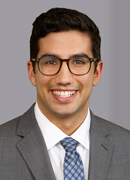
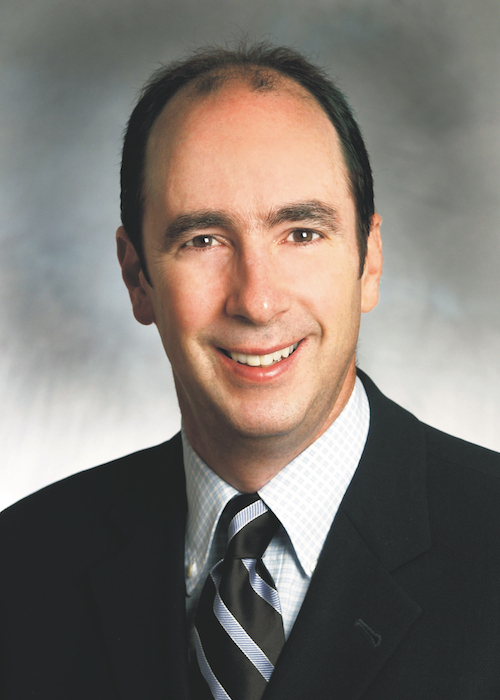 The biggest sports headline in 2017 may not be made on the court, but rather delivered from the courtroom. NCAA athletes have ramped up their collective efforts over the past few years to receive recognition as employees under the Fair Labor Standards Act (FLSA), and 2017 could be the year when the debate is settled. While the students’ arguments in Gillian Berger, et al. v. National Collegiate Athletic Association, et al. were recently rejected by the 7th Circuit Court, Judge David Hamilton’s concurring remarks did leave the door open for potential future claims. Judge Hamilton’s comments focused on the fact that the plaintiffs in this case – all of whom were track and field athletes – participated in a “non-revenue sport.” This distinction could provide the foundation for a claim by athletes of revenue generating sports like basketball and football. The second major class action filed against the NCAA, Dawson v. National Collegiate Athletic Association et al., is such a case. The class action was filed in the California Northern District Court by former college football players – a sport that generates hundreds of millions of dollars per year – claiming that the NCAA and Pac-12 conference breached the FLSA and California labour laws by not paying the student athletes. If the plaintiffs in Dawson succeed, the contradicting verdicts could lead to an eventual Supreme Court review.
The biggest sports headline in 2017 may not be made on the court, but rather delivered from the courtroom. NCAA athletes have ramped up their collective efforts over the past few years to receive recognition as employees under the Fair Labor Standards Act (FLSA), and 2017 could be the year when the debate is settled. While the students’ arguments in Gillian Berger, et al. v. National Collegiate Athletic Association, et al. were recently rejected by the 7th Circuit Court, Judge David Hamilton’s concurring remarks did leave the door open for potential future claims. Judge Hamilton’s comments focused on the fact that the plaintiffs in this case – all of whom were track and field athletes – participated in a “non-revenue sport.” This distinction could provide the foundation for a claim by athletes of revenue generating sports like basketball and football. The second major class action filed against the NCAA, Dawson v. National Collegiate Athletic Association et al., is such a case. The class action was filed in the California Northern District Court by former college football players – a sport that generates hundreds of millions of dollars per year – claiming that the NCAA and Pac-12 conference breached the FLSA and California labour laws by not paying the student athletes. If the plaintiffs in Dawson succeed, the contradicting verdicts could lead to an eventual Supreme Court review.
A similar fight for fair wages is being fought by players of the Canadian Hockey League, the major junior ice hockey league that is made up of the OHL, WHL and QMJHL. The proposed class action hopes to expand the definition of employees under Canada’s various labour laws to include major junior ice hockey players, which would entitle them to receive the minimum wage and overtime pay. The class action’s certification hearing is set for early 2017 and would shed light on the profitability of the major junior ice hockey leagues, if certified. While the NCAA and CHL class actions are in their early stages, both groups of athletes could have a much clearer understanding of their rights come this time in 2018.
Ryan Rodenberg
Associate Professor, Florida State University, USA.
 A key sports law development to watch in 2017 is the extent to which sports leagues fully embrace integrity-preserving forensic sports law analytics measures. From doping to match-fixing to vote-rigging, the forensic sports law analytics toolkit—one derived from using quantitative measures to detect different types of sports corruption—provides an additional layer of defense in any good governance plan. In addition to academic professors and private third party providers, sports leagues are increasingly setting up in-house integrity units to address these issues.
A key sports law development to watch in 2017 is the extent to which sports leagues fully embrace integrity-preserving forensic sports law analytics measures. From doping to match-fixing to vote-rigging, the forensic sports law analytics toolkit—one derived from using quantitative measures to detect different types of sports corruption—provides an additional layer of defense in any good governance plan. In addition to academic professors and private third party providers, sports leagues are increasingly setting up in-house integrity units to address these issues.
The impact of forensic sports law analytics is most prominently found in the realm of game-fixing and betting fraud. While US-based sports leagues have lagged behind others in the regard, change is afoot. Indeed, in a joint 2013 court filing in the long-running New Jersey sports gambling case, the NCAA, NFL, NBA, NHL, and MLB posited that they “have an essential interest in how their games are perceived and the degree to which their sporting events become betting events.” This is particularly important, as certain sports leagues are now pursuing commercial opportunities in the gambling realm while simultaneously adopting forensic sports law analytics measures.
MAUREEN WESTON
Professor of Law, Pepperdine University
 The impact of digital media, social media, virtual reality platforms and “cord-cutting” on traditional major broadcast networks is among the sports law issues to watch in 2017. Live sports, such as the NFL (the most widely watched sport in the U.S.) bring in live audiences and garner lucrative advertising deals. Yet how fans and consumers are watching sports and entertainment is radically changing with new media. ESports are also changing the sport industry landscape. Major network broadcasting and television deals with the NFL are set to expire within the next five years, and leagues may move to directly deals with alternative media entities, such as the NBA’s deal with NextVR for exclusive content for NBA virtual reality broadcast. The ease of new media and technology’s ability to copy, ambush market, ambush traditional broadcasting, and advertize via Twitterize during games without sponsorships raises numerous issues involving intellectual property rights, technology, business relationships, game attendance, advertising viability, and deals in sports. Stay tuned in.
The impact of digital media, social media, virtual reality platforms and “cord-cutting” on traditional major broadcast networks is among the sports law issues to watch in 2017. Live sports, such as the NFL (the most widely watched sport in the U.S.) bring in live audiences and garner lucrative advertising deals. Yet how fans and consumers are watching sports and entertainment is radically changing with new media. ESports are also changing the sport industry landscape. Major network broadcasting and television deals with the NFL are set to expire within the next five years, and leagues may move to directly deals with alternative media entities, such as the NBA’s deal with NextVR for exclusive content for NBA virtual reality broadcast. The ease of new media and technology’s ability to copy, ambush market, ambush traditional broadcasting, and advertize via Twitterize during games without sponsorships raises numerous issues involving intellectual property rights, technology, business relationships, game attendance, advertising viability, and deals in sports. Stay tuned in.
Ron Katz
Of Counsel, GCA Law Partners LLP

One of the important sports law issues of 2017 will be the reform of the World Anti-Doping Agency (WADA). Although 2016 highlighted widespread doping by Russian athletes, less attention was paid to why WADA did not detect that doping and to the many conflicts of interests within WADA, such as WADA receiving funding from organizations it is supposed to be policing. WADA will have to undergo substantial re organization if it is to restore confidence in the integrity of international athletic competition.
Kate Porter
International Arbitration and Sports Law Associate at Skadden, Arps, Slate, Meagher & Flom LLP
 One of the key sports law issues to watch in 2017 will be the continued fallout from the Russian anti-doping scandal.[1] In 2016, Professor Richard McLaren published two independent reports concluding that, since at least 2011, Russia has operated an elaborate state-sponsored doping regime involving over 1,000 Russian athletes. Following the publication of the First McLaren Report in July 2016, the International Olympic Committee (“IOC”) established two separate commissions to investigate the allegations contained in the reports. The IOC’s “Inquiry Commission” is looking into allegations of “institutional conspiracy across summer and winter sports athletes who participated with Russian officials within the Ministry of Sport and its infrastructure, such as [the Russian Anti-Doping Agency], [the Center of Sports Preparation of National Teams in Russia] and the Moscow Laboratory along with the [Federal Security Service],” while the “Disciplinary Commission” is reanalyzing anti-doping samples from Russian athletes who participated in the 2014 Sochi Winter Olympics and 2012 London Summer Olympics to determine whether those samples had been manipulated.[2]
One of the key sports law issues to watch in 2017 will be the continued fallout from the Russian anti-doping scandal.[1] In 2016, Professor Richard McLaren published two independent reports concluding that, since at least 2011, Russia has operated an elaborate state-sponsored doping regime involving over 1,000 Russian athletes. Following the publication of the First McLaren Report in July 2016, the International Olympic Committee (“IOC”) established two separate commissions to investigate the allegations contained in the reports. The IOC’s “Inquiry Commission” is looking into allegations of “institutional conspiracy across summer and winter sports athletes who participated with Russian officials within the Ministry of Sport and its infrastructure, such as [the Russian Anti-Doping Agency], [the Center of Sports Preparation of National Teams in Russia] and the Moscow Laboratory along with the [Federal Security Service],” while the “Disciplinary Commission” is reanalyzing anti-doping samples from Russian athletes who participated in the 2014 Sochi Winter Olympics and 2012 London Summer Olympics to determine whether those samples had been manipulated.[2]
The effects of the Russian doping scandal are profound and far-reaching. Depending on the results of the Disciplinary Commission, it is possible that some Russian athletes may be stripped of the medals they won in London and Sochi. Additionally, the Inquiry Commission may look to extend sanctions against Russia and its officials. In July, the IOC Executive Board imposed provisional measures on Russia in response to the First McLaren Report which included denying accreditation to the Russian Ministry of Sport and to Russian officials implicated in the First McLaren Report and a request to “all International Olympic Winter Sports Federations to freeze their preparations for major events in Russia, such as World Championships, World Cups or other major international competitions under their responsibility, and to actively look for alternative organisers”; in December, the IOC extended those measures until further notice.[3]
Matt Mitten
Professor of Law, Executive Director, National Sports Law Institute and LL.M. in Sports Law Program for Foreign Lawyers, Marquette University Law School
 On the international sports law front, the responses of the Russian Federation and the Olympic Movement to the Russian doping scandal as well as other threats to the integrity of global sports competition will be very important to watch. In the U.S., I’ll be watching the judicial response to continuing efforts to use antitrust, employment, and labor laws to professionalize intercollegiate athletes along with National Collegiate Athletic Association internal reforms to encourage and ensure that all student-athletes, particularly Division I basketball and FBS football players, receive the educational, injury protection, and social benefits of the bargain for their playing services. In addition, the implementation of safe sport initiatives by sports governing bodies and the results of adjudication procedures will be important to follow.
On the international sports law front, the responses of the Russian Federation and the Olympic Movement to the Russian doping scandal as well as other threats to the integrity of global sports competition will be very important to watch. In the U.S., I’ll be watching the judicial response to continuing efforts to use antitrust, employment, and labor laws to professionalize intercollegiate athletes along with National Collegiate Athletic Association internal reforms to encourage and ensure that all student-athletes, particularly Division I basketball and FBS football players, receive the educational, injury protection, and social benefits of the bargain for their playing services. In addition, the implementation of safe sport initiatives by sports governing bodies and the results of adjudication procedures will be important to follow.
RICHARD BRAND
Chair of the Sports Group at Arent Fox
CHRISTINA CAMPBELL
Associate at Arent Fox
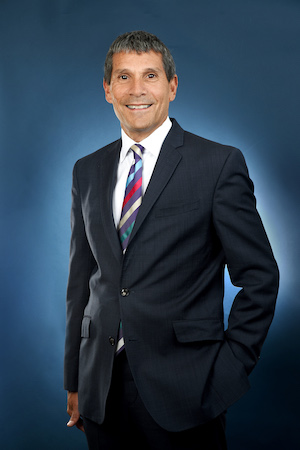 The crossover between sports and technology continues to grow and evolve. While 2016 was the year of daily fantasy sports, 2017 looks to be the year of eSports. Electronic sports, commonly referred to as eSports, are multiplayer video game competitions. eSports, as an industry, was expected to generate an estimated $892 million worldwide in 2016, and is slated to surpass $1 billion in 2017. The eSports industry is nothing new, with major corporate sponsors like Coca-Cola and American Express lining up to act as team sponsors, and Twitch, an immensely popular video streaming service for gamers, being purchased by Amazon for almost $1 billion in 2014. Owners of traditional professional sports teams, and in particular, owners of NBA teams, have also shown a keen interest in eSports. To name a few, Mark Cuban (Dallas Mavericks), Ted Leonsis (Washington Wizards), and Peter Gruber (Golden State Warriors) have all made investments in eSports.
The crossover between sports and technology continues to grow and evolve. While 2016 was the year of daily fantasy sports, 2017 looks to be the year of eSports. Electronic sports, commonly referred to as eSports, are multiplayer video game competitions. eSports, as an industry, was expected to generate an estimated $892 million worldwide in 2016, and is slated to surpass $1 billion in 2017. The eSports industry is nothing new, with major corporate sponsors like Coca-Cola and American Express lining up to act as team sponsors, and Twitch, an immensely popular video streaming service for gamers, being purchased by Amazon for almost $1 billion in 2014. Owners of traditional professional sports teams, and in particular, owners of NBA teams, have also shown a keen interest in eSports. To name a few, Mark Cuban (Dallas Mavericks), Ted Leonsis (Washington Wizards), and Peter Gruber (Golden State Warriors) have all made investments in eSports.
As the eSports industry has exploded in size, popularity, and financial potential, some of the same challenges and concerns that face traditional sports like basketball and football are beginning to surface. Critically, as a threshold issue, the question of whether playing video games should be classified as a “sport” continues to spark heated debate. For players, there are widespread reports about the use of performance-enhancing drugs to boost concentration and prevent fatigue. There are also concerns about the exploitation and burnout of professional eSports players. In marketing, TBS has begun broadcasting eSports competitions and Activision Blizzard (the publisher of the wildly-popular game “Call of Duty”) is hoping to create a traditional television channel to be “the ESPN of video games.” Colleges are even getting in on the action, with several nationwide leagues being formed, and some schools are creating official video game teams and offering scholarships to eSports players. As with any new industry, an entire framework of rules and regulations will need to be created to handle these issues and it will be important for eSports stakeholders to have forward-thinking legal counsel to help alleviate the growing pains that are sure to come.
eSports have not yet entered the mainstream narrative in the way that daily fantasy sports did in 2016, but we believe it is imminent. Given the rapid expansion and potential for eye-popping revenue, 2017 could be the year to watch out for eSports.
References|closed
[1] The views expressed are Ms. Porter’s and not necessarily Skadden’s or any one or more of its clients.
[2] Statement of the IOC Regarding the “Independent Person” Report, Olympic.org (Dec. 9, 2016), available at: https://www.olympic.org/news/statement-of-the-ioc-regarding-the-independent-person-report.
[3] Statement of the Executive Board of the International Olympic Committee on the WADA Independent Person Report, Olympic.org (July 19, 2016), available at: https://www.olympic.org/news/statement-of-the-executive-board-of-the-international-olympic-committee-on-the-wada-independent-person-report; IOC extends doping sanctions on Russia as Richard McLaren’s report looms, The Guardian (Dec. 7, 2016), available at: https://www.theguardian.com/sport/2016/dec/07/ioc-extends-doping-sanctions-on-russia.
- Amateur Sport American Football Anti-Corruption Anti-Doping Anti-Trust Athlete Rights Athlete Welfare Baseball Basketball Betting College Sports Concussion Employment Law Fair Labor Standards Act (FLSA) Fantasy Sport Fantasy Sports Gambling Golf Governance Ice Hockey Intellectual Property Major League Baseball (MLB) McLaren Report National Basketball Association (NBA) National Collegiate Athletic Association (NCAA) National Football League (NFL) National Hockey League (NHL) National Labor Relations Act (NRLA) NFL Players Association (NFLPA) PGA Player Safety Regulation Russia Supreme Court of the United States (SCOTUS) UFC UFC Anti-Doping Policy United States of America (USA) Unlawful Internet Gambling Enforcement Act (UIGEA) US Anti-Doping Agency (USADA) US Trademark Office World Anti-Doping Agency (WADA)




